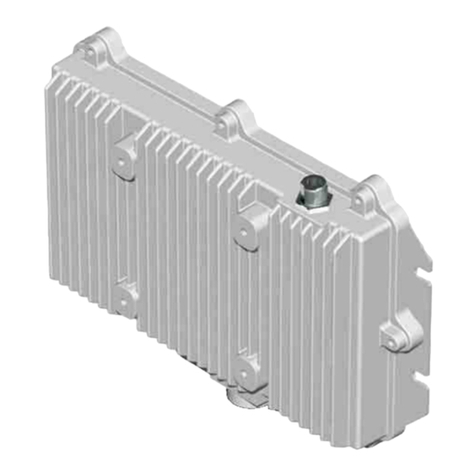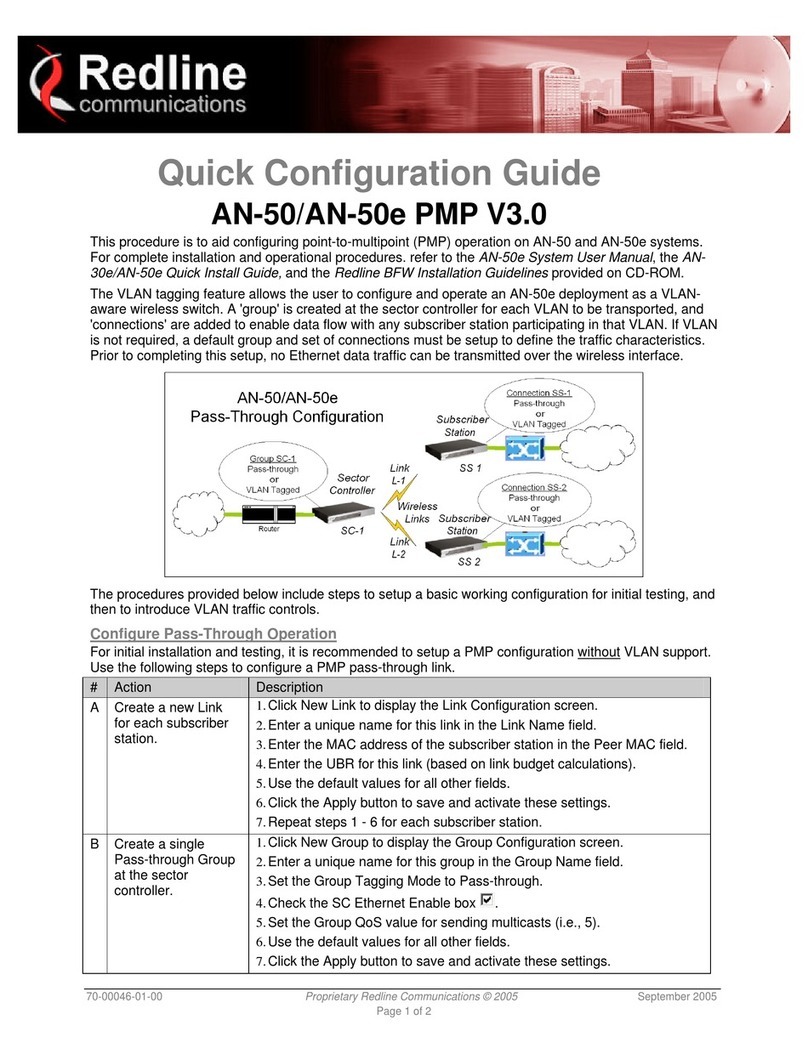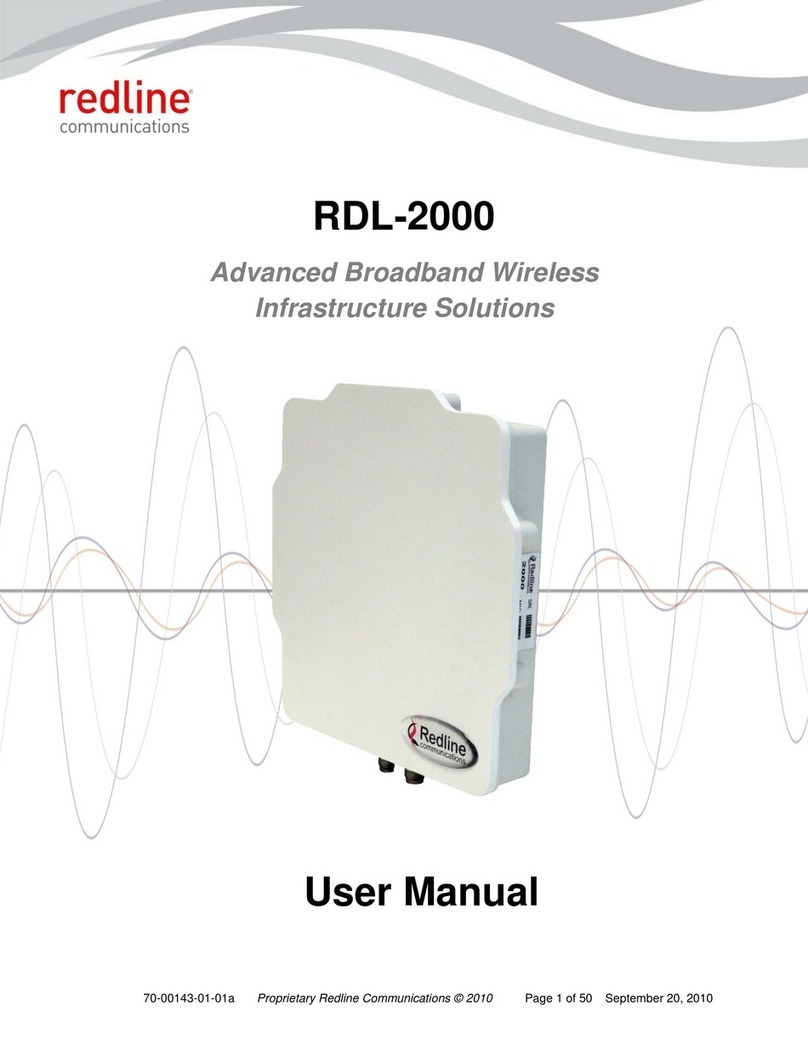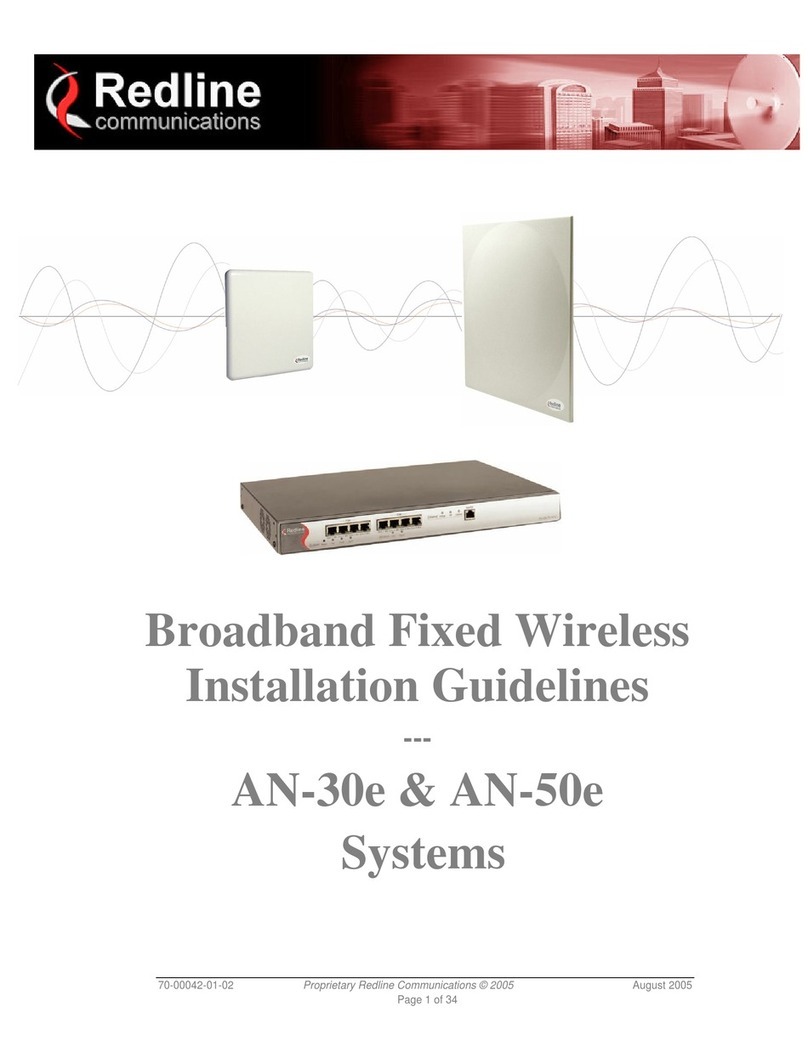
AN-50e
user manual
70-00033-01-03 Proprietary Redline Communications © 2005 September 2005
Page 4 of 100
Ethernet............................................................................................... 32
Wireless............................................................................................... 32
3.3.2 PTP System Status ............................................................................. 33
General information ............................................................................. 33
Ethernet LAN Statistics........................................................................ 34
Wireless Statistics ............................................................................... 34
Controls ............................................................................................... 34
3.4 System Logs Screen ............................................................................... 35
3.5 System Configuration Screen.................................................................. 36
3.5.1 PMP System Configuration ................................................................. 36
General................................................................................................ 37
IP ......................................................................................................... 37
Management........................................................................................ 38
Wireless............................................................................................... 39
Controls ............................................................................................... 41
3.5.2 PTP System Configuration .................................................................. 42
General................................................................................................ 42
Wireless............................................................................................... 43
Controls ............................................................................................... 46
3.6 System Password Screen ....................................................................... 47
3.7 Upload Software ...................................................................................... 48
3.8 SNMP Settings Screen............................................................................ 49
3.8.1 SNMP Configuration............................................................................ 49
3.8.2 Trap Configuration:.............................................................................. 50
3.8.3 Link Configuration Screen ................................................................... 51
4Using VLAN Over Wireless...................................................................53
4.1 Features .................................................................................................. 53
4.2 Overview.................................................................................................. 53
4.3 VLAN Configuration Screens................................................................... 55
4.3.1 Group Configuration Screen................................................................ 55
Group................................................................................................... 55
Wireless traffic parameters.................................................................. 56
4.3.2 Connection Configuration Screen........................................................ 57
Wireless Connection............................................................................ 57
Wireless Traffic Parameters ................................................................ 58
4.4 Browse Screens ...................................................................................... 59
4.4.1 Groups Browse Screen ....................................................................... 59
4.4.2 Links Browse Screen........................................................................... 60
4.4.3 Connections Browse Screen ............................................................... 61
4.5 Statistics Screens .................................................................................... 62
4.5.1 Link Statistics Screen .......................................................................... 62
General................................................................................................ 62
Wireless............................................................................................... 62
Block.................................................................................................... 63
Controls ............................................................................................... 63
4.5.2 Group Statistics Screen....................................................................... 64































